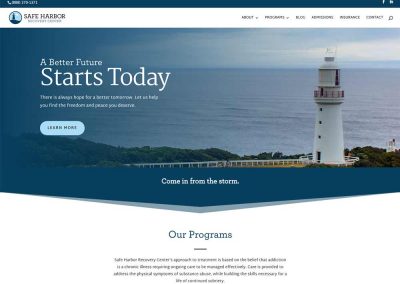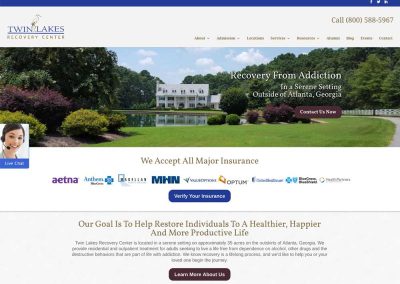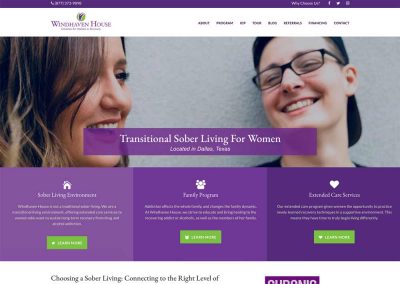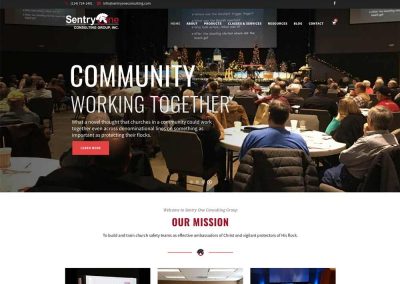People often look at me in confusion when I tell them I’m in the business of drug rehab marketing. They wonder how a treatment center markets itself. Do they go under the bridge and find some fresh drunks to treat? Do they hang out in emergency rooms and wait for alcohol or drug-related cases to come in? Do they advertise on television and radio?
Most don’t do any of those things listed above. Drug rehab marketing, like many other businesses relies primarily on relationships. Relationships between treatment professionals and their communities, between treatment professionals and other professionals, and between treatment centers and other treatment centers. Even relationships between the treatment-seeking public and the website of treatment center or helping professional is, in fact, an important relationship for drug rehab marketing. On television and radio, however, there has always been a small group of centers using this medium to attract customers. Many remember the slogan for Charter back in the 80s and 90s, “If you don’t get help at Charter, please, get help somewhere.” But this represents a very small percentage of providers these days.
Drug rehab marketing relies on B2B, B2C type outreach strategies. I won’t go in to all of these in this post, but will go over some of the primary strategies.
In regards to fresh calls for treatment, the B2B strategy is based on a single concept: through their own internal efforts of marketing, both B2B and B2C, any given treatment center will receive inquiry calls for treatment from families and patients where the patient is not appropriate for their center, for one reason or another. Because most good centers want the individual to get the help they desperately need, this initial center will refer the call out to another center who a) specializes in the area of need of the patient or family (clinical, geographic, demographic, or financial), and b) has a trust relationship and like philosophy with them. The ability for the center receiving the referral lies squarely on how well they’ve marketed their programs to other programs. Here are some of the ways these relationships are developed.
Conferences – Each year, there are numerous conferences held by various entities that treatment center personnel attend. National Association of Addiction Treatment Providers (NAATP) holds an annual conference. Foundations Recovery Network, a suite of treatment programs in several states, holds two conferences on each coast. C4 Recovery Solutions (C4 stands for Conferencing, Convening, Collaborating, and Consulting) holds 3 or 4 conferences each year. And there are many other conferences held throughout the year. Stakeholders in programs and related businesses attend these conferences for the purpose of visibility and relationships marketing – B2B.
Outreach – Drug rehab marketing professionals fill their time each week with various marketing activities such as center site-visits, luncheons, association participation and service, outcalls, and eblasts to their mailing lists. Site-visits are the practice of visiting treatment centers, soaking in their philosophy and methodology, projecting your centers skill sets, and making contact with admissions and clinical professionals who might refer cases to you for one reason or another. This is a very powerful drug rehab marketing tool – if not the most powerful – due to the propensity for deeper contacts. It is much more personal than many of the other methods of touching prospects. B2B.
Internet – Marketing your center online, through a website and various forms of social networking, is a very important and complex area of both B2B and B2C drug rehab marketing. I could write a series of articles on this area and still only scratch the surface. The power of the Internet is awesome, both positively and potentially negatively. Suffice it to say, the website is still the most important asset in the realm, but as times evolve, the interplay between the website and all other digital medium becomes increasingly important. Your website has a job to do: convince the landing public, mostly families, not patients, that your center is the place to call for their loved one. Your site can usually not do this without help from many other areas of closing. Yes, sales, particularly sales flow. Anyone who doesn’t realize that sales is a part of this equation is fooling themselves, and will not prevail in the competitive market space of drug and alcohol treatment. The website should be an excellent depiction of the treatment center, and contain all that is needed to create initial trust with someone who found it with a keyword search on Google. It also needs to support other B2B drug rehab marketing efforts well. For instance, a treatment center markets itself well to another center in either a conference or site-visit B2B effort. A call comes in to the referent’s call center, which realizes quickly that the patient isn’t appropriate for them, and refers the family to you and your website. The family will usually visit the website first, and the site must build on the trust created by the professional making the referral. Likely, if the site does a good job of this, your center will get the call. If it isn’t impressive, you likely won’t.
While only a cursory piece on the concepts of drug rehab marketing, I hope this helps the reader understand the overall picture a bit better. At MaddMarketing, we specialize in study of these areas closely, as Return On Investment (ROI) element is what drives our business and what we seek to provide our customers.
Call us at 800.315.0150 to speak with us now or fill out our contact form and a representative will contact you.





